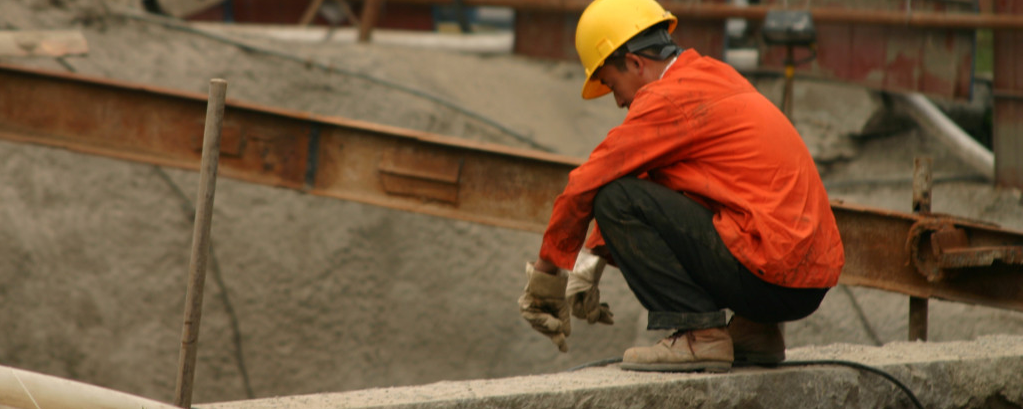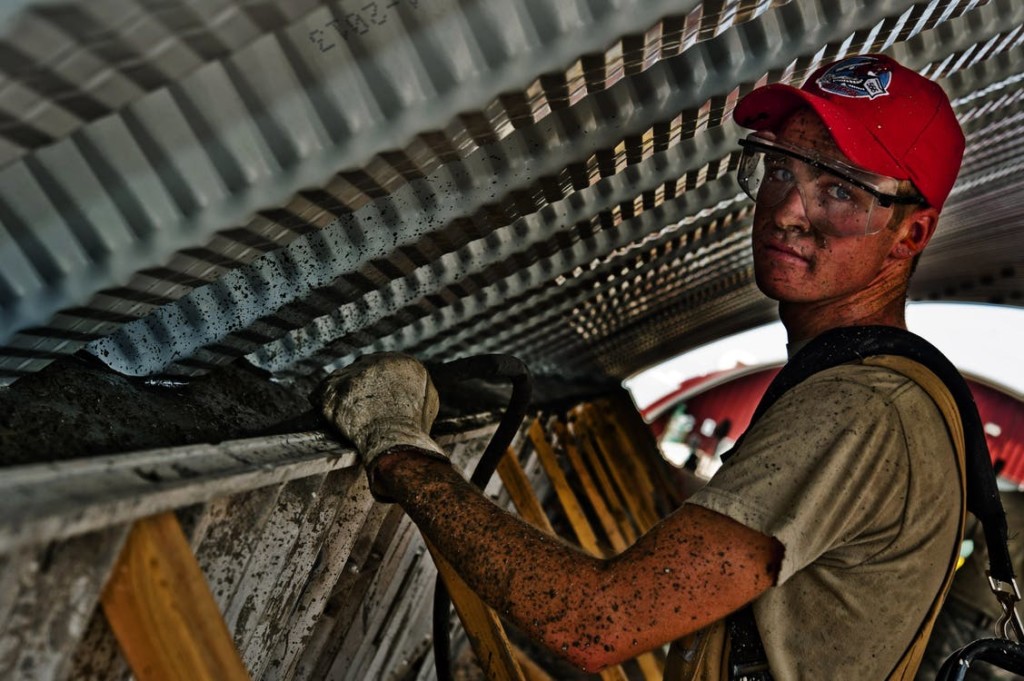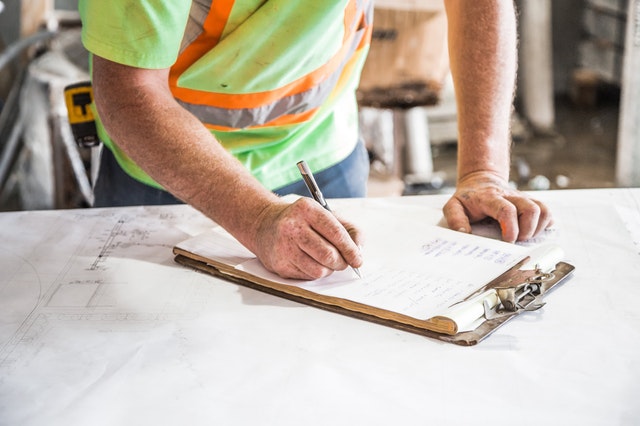In this article, we will discuss how to conduct a working at heights risk assessment, and how this assessment can keep your workers safe from accidents and injury.
ACUTE offers the best-in-class working at heights risk assessment and training to help get your team home safely. Contact us today.
Now let’s take a deeper look at how to perform such an assessment and why conducting one is important.
How To Conduct A Working At Heights Risk Assessment
Essential Elements
Risk Assessment Templates
The best way to conduct a working at heights risk assessment is to use a helpful template.
According to Safety Culture, “a risk assessment template is a tool used to identify and control risks in the workplace. It involves a systematic examination of a workplace to identify hazards, assess injury severity and likelihood and implement control measures to reduce risks.”
Proper Record Keeping
Additionally, an effective record-keeping system is essential for tracking hazards, risks, control measures and corrective actions. It’s not enough to remain compliant with regulations; a good risk assessment system will help identify hazard trends and proactively improve workplace safety.
For example, Safety Culture offers a working at heights risk assessment template that allows you to do the following:
- Create a worker profile
- Record the nature of work
- Identifying activities associated with working at heights
- Determine potential risks like falling, slipping, or tripping
- Outline controls like training, planning, and proper use of fall protection systems and equipment
- Provide recommendations to improve safety
When Is A Working At Heights Risk Assessment Necessary?
The primary aim of this assessment is to ensure good practices are in place to protect your employees. Contact ACUTE today if your team is experiencing the following signs:
- Regular Close Calls – you continue to hear stories of near incidents that indicate your team, process, or equipment may be exposed to risk.
- Consistency of Procedures – if there is a lack of clarity in how to use equipment or conduct work safety setup.
- Complaints of Being Exposed to Risks – when employees express concerns about working at heights and the dangers thereof.
By taking the time to conduct this assessment, you are sending a message that you care about workplace safety and won’t get complacent
Working At Heights Do’s and Don’ts
Here are a few ways to cut down on working at heights risks from the Health and Safety Executive:
- Do as much work as possible from the ground, including preparations for what will be done while working at heights
- Make sure workers get safely to and from the project site
- Check equipment to make sure it is suitable, stable and strong enough for the job
- Be careful when working on or near fragile surfaces
- Plan and implement emergency and rescue procedures
- Don’t overload ladders or overreach on ladders or stepladders
- Get all your employees trained
Be aware of how seriously your workers take working at heights safety
Working At Heights Training
Ontario Regulation 213/91 – Construction Projects governs construction work, and states Working at Heights training is mandatory if you are a construction project worker and if you will use any of the following:
- Travel restraint system
- Fall restricting system
- Fall arrest system
- Safety net
- Work belt OR safety belt
For more on training required for construction workers, click here.
The purpose of working at heights training program includes four parts:
- Strengthen workplace safety culture – By elevating the profile and importance of preventing falls from heights.
- Knowledge and Safety Practices – Provide workers who may be exposed to the hazard of falling with adequate knowledge about fall hazards and general safety practices to work safely at heights.
- Purpose and Use of Equipment – Provide workers who use personal fall protection equipment with sufficient knowledge about its purpose and use; and,
- Incident Reduction – Reduce the number of fall-from-heights incidents, injuries, and fatalities.
Therefore, ACUTE’s Working at Heights training provides theory and hands-on practical training, as well as evaluation facilitated by highly skilled and competent instructors. Here’s a look at how the day would break down:
Working at Heights (Theory Module 3hr)
- Working at Heights (WAH) and legislation
- WAH hazards
- Safe Work Plans & assessing and controlling WAH hazards
- The hierarchy of controls – application to WAH
- Fall prevention strategies and systems
- Fall protection systems
- Ladder safety
- Written evaluation
Working at Heights (Practical Module – 3.5hr)
- Fall prevention/protection system requirements and limitations
- A-B-C component selection, inspection, use
- Harness inspection and fitting exercise & evaluation
- Lanyard inspection exercise and evaluation
- Travel restraint, fall arrest set-up exercise & evaluation
- 100% tie-off exercise and evaluation
- Ladders, scaffolds, and elevating work platforms
- Rescue plan – components and purpose
- Safe work strategies and safe anchor exercise
- Written evaluation
Learn more about the course by watching this video:
Working at Heights Alternatives for Non-Construction Workers
If you will be working at heights in a sector other than construction, consider the following:
This training course is geared towards those working at heights in Industrial Establishments, Mining Operations, Health Care and Residential Facilities sectors, or workplaces other than Construction Projects. This flexible training course can be modified to best suit your specific industry’s needs, and to address workplace-specific equipment. This course includes hands-on training, detailed videos, handouts, quizzes, and classroom interaction with experienced instructors.
This course focuses on the dangers of working at heights from a scaffold or ladder, and how to prevent accidents and incidents. Our Scaffolding and Ladder course teaches participants how to work safely, including how to properly dismantle scaffolding after use. Participants will learn how to properly identify workplace hazards related to scaffolding and ladders, how to identify safe scaffold setups, how to identify different types of ladders, and understand relevant legislation.
Trust ACUTE for Your Working at Heights Risk Assessment and Training!
With ACUTE, you will experience the best comprehensive, hands-on Working At Heights training.
ACUTE goes beyond government compliance in Ontario health and safety training.
- Open Door Instructor-Student Partnersh
 ip: ACUTE’s training services emphasize client participation. Staff foster relationships with clients and serve as a touchstone for advice moving forward.
ip: ACUTE’s training services emphasize client participation. Staff foster relationships with clients and serve as a touchstone for advice moving forward. - Serving Your Team and Industry: With a vast array of clients in the manufacturing, construction, health, academic, and government sectors, ACUTE brings the best safety practices from across the spectrum to your workplace.
- 100 Years of Combined Experience: ACUTE provides comprehensive health and safety training, on-site safety services, and consulting services. With over 100 years of combined experience, our staff offer solutions.
- Track Record of Success: ACUTE is rated 4.9/5 stars on Google reviews, demonstrating a commitment to our clients, quality, and a passion for training.
“Working with ACUTE is a seamless process. They are very helpful and accommodating with all types of training requests.” – Cheryl
Contact us today for quality training in your workplace or on-site at ACUTE’s proven training facilities, and click the button below to sign up!





